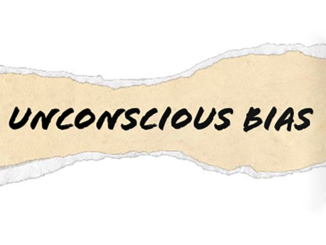
by Sebastian Murdoch-Gibson, Co-Founder, QualRecruit, Ottawa, Ontario, Canada, sebastian@qualrecruit.com
Interview with Ratna Khanijou, Professor, University of London, Goldsmiths, London, U.K. and Daniela Pirani, Professor, University of Liverpool, Liverpool, U.K.


Have you ever experienced that awkward moment when while visiting with a couple they start bickering, and you don’t know what to do with yourself? Imagine that happened while you were moderating an in-home ethnography. Even worse, imagine that something you did—perhaps inadvertently—was the cause of the conflict.
The seconds in which a situation like this unfolds are beset with ethical and methodological challenges. Seemingly small actions taken at these sensitive moments can have an outsized impact on the outcome of the study. For instance, outside of the research context, we might instinctively act to diminish the tension in the room in situations like this—especially when we feel some degree of responsibility for introducing the conflict.
However, though we might feel the same social impulse in the research setting, this could be an intervention that closes off our ability to understand the couple that we’re studying and the nature of their conflicts. So, how do we proceed?
In their recent co-authored article, “Ethical dilemmas in studying family consumption,” in Qualitative Market Research: An International Journal, Professors Ratna Khanijou and Daniela Pirani illustrate in-depth three critical issues:
- How everyday situations like this can become ethically fraught
- How instinctive reactions to these situations can jeopardize research
- How we can better navigate the ethical tensions that arise when doing research in intimate spaces
Furthermore, they theorize five main categories of ethical dilemma when conducting research with families, and they advance strategies for dealing with them. Khanijou and Pirani shared some of what they’ve found with me in an interview.
Q: I’d like to start by providing some background. You drew on your experiences conducting fieldwork from two separate studies to come up with your five categories of ethical dilemma. Could you tell me a little more about the studies you drew on?
Khanijou: We were each conducting studies on family and food consumption from a marketing perspective. We each used a longitudinal approach, being immersed in our context for several months, which presented several challenges. By observing couples over a long period of time, I was studying how family consumption routines, particularly around dinner, are formed in new families (e.g., newlyweds or newly cohabitating couples). The interactions of couples sometimes yielded emotionally tense moments and times when I was asked to become involved in their arguments.
Pirani: I was looking at the impact of advertising imagery in family practices, in particular breakfast. When talking about our experiences, Ratna and I found that there were a lot of “itchy moments” we had not foreseen in each of our studies. There was a gap between the painstakingly long and accurate ethical approval process academic institutions require and the ethical messiness of field research, where ethical dilemmas often play out in split seconds. We wanted to share this experience with consumer researchers out there.
Q: For each of you, what situations in your fieldwork proved the most ethically challenging?
Khanijou: The emotional dilemmas were the hardest to handle in this project, especially when collecting data out of people’s distress—for instance, during a couple’s fight. I was confused on how to feel about witnessing a conflict in action that was both rich in data and emotionally tense. This emotional dilemma sometimes also became a practical dilemma, for example, when couples asked me to take a side in their fights. Being “the third person” in a couple’s new lives together was a role I had not foreseen.
Pirani: I was tested by a display dilemma, which made me realize how much of my personal life was disclosed. When I was recruiting participants for the study, the spokesperson of a conservative Catholic association who was assisting with recruitment revealed that they had screened my personal Facebook profile and noticed some LGBT acquaintances, a detail that raised mutual suspicions and which ultimately led to her withdrawal as an important gatekeeper in the study. This incident made me realize how much of my life was on display to my potential participants, and that my personal life was a matter that could be disclosed beyond my intent.
Q: You introduced some really interesting concepts in discussing the ethical challenges your work involved. I’d like to discuss the concepts of “emotional dilemmas” and “practical dilemmas” that you ran into, Ratna. Can you help us better understand what these are; the tensions you faced; how you resolved them?
Khanijou: The emotional dilemmas emerge when complex and unpleasant emotions are disclosed by respondents in the process of collecting data. For instance, when couples I was observing had impromptu fights about what to cook for dinner during their shopping trip. The emotional dilemma is the emotional tension that we, as researchers, face. I felt a range of emotions, from joy and excitement to discomfort and guilt. This was because as a novice researcher, I was happy with the rich data that was emerging but, at the same time, I felt discomfort and guilt in being present in the moment. In one instance, I was the cause of their fight as one partner got so carried away talking with me that he made a big blunder in the cooking!
The second ethical tension that came up for me was the practical dilemma, for instance, when I was asked to pick a side in the couple’s fight.
I chose to remain silent and not interfere in the couple’s fight, but I also decided not to take any notes and pictures during the fight. However, the audio recordings were running in the background, which allowed me to revisit the tense interactions and debates after I left the couple’s home. This enabled me to make field notes and later reflexive notes. Often after a fight, I would ask the couple to explain their fights and individual rationales.
Now, after further reflection, I have decided that in the future I will continue to take the field notes and pictures of the moment (unless a couple informs me not to) because they have consented to take part in the project, and I should capture the full extent of the data for interpretation. Nonetheless, I recognize that this may pose consent dilemmas; couples cannot envisage what interactions will emerge prior to signing the consent form. It is indeed a complex web of dilemmas, so I guess I would act according to the sensitivity of the situation.
Q: Now, I’d like to zoom in on the concept of the “display dilemma” that you drew on, Daniela. How would you define “display” as it relates to research? Can you provide an example of navigating a “display dilemma” in the research context?
Pirani: Display dilemmas refer to the work the researcher does to find a common ground with participants. It has to do with showing, revealing, and finding recognition as the researcher. Sometimes this implies proving proficiency with the topic being researched or demonstrating empathy to create trust. However, display dilemmas also involve deciding when you should not show or reveal thoughts and identities in order to create an open, unbiased space for respondents to be themselves.
Because we study family consumption (and, therefore, intimate and domestic lives), display is necessary, as it allows us to set a common ground and a connection with participants. However, it is also problematic, as boundaries are necessary to protect both researchers and participants. For instance, we actively avoid friendships with participants. Although Ratna was in a newly cohabiting relationship herself when she went to observe other newly cohabiting couples of similar age and class profile, she avoided becoming friends with them as it posed an ethical issue. As the couples were observed through time, she had to conceal her memory of the couple’s history and fights. While the participants may have forgotten their arguments, Ratna still had audio recordings of them, creating a power imbalance and posing an ethical dilemma, particularly if she had engaged in a friend-based relationship with the couples.
Q: The five types of ethical dilemma you identified in your manuscript included the already discussed “display,” “emotional,” and “practical” dilemmas, as well as the “positioning” and “consent” dilemmas. Can you tell us a bit about the positioning and consent dilemmas?
A: Working with families implies a degree of relational involvement with family members, and we named this as a positioning dilemma—the tension arising from managing different relationships in a network or system of people with whom you’re interacting. Consent dilemmas expose the discrepancy between the procedural ethics a project started with and the microethical decisions a researcher ends up making day-by-day.
We devised three strategies to navigate all five dilemmas. These three strategies are based on microethics and reflexivity.
Q: Before telling us about your strategies to navigate these ethical dilemmas, can you explain what you mean by microethics and reflexivity?
A: Microethics defines all the day-to-day decisions a researcher undertakes, such as deciding to rephrase a question to make the participants feel at ease. Reflexivity is a process of self-awareness in making decisions in the practice of research. Sometimes doing research is messy and it feels off-putting: these moments are normal and relational, and our five categories of ethical dilemma help better understand them.
Q: Great, thank you! Can you now walk us through the three strategies you’ve devised to navigate the ethical dilemmas?
A: Yes, for sure!
Strategy one: We call for researchers to acknowledge their role in data collection, as the quality of the data also depends on our professional and emotional display. Researching families does not require being part of them, but we advocate for reflexivity on how relationships and data emerge because of the researcher. For instance, keeping a reflexive diary in the field can help develop awareness of our own interactions and feelings and their potential influence on the data collection process.
Strategy two: This consists of avoiding checking out or disappearing from emotional moments happening between respondents and instead learning to develop empathy, mostly through neutral, active listening.
Strategy three: Using a multimethod design, such as combining interviews with observations, can help researchers deal with practical dilemmas by looking at the phenomena under study from different angles. Researchers can capture and reflect on their role in interactions with participants using field notes and speech-in-action recordings, as well as recordings and transcripts from the more formal interviews. Using multiple sources allows for more awareness of one’s own influence during the data collection and, therefore, offers more situated lenses to study the qualitative phenomena and consider how a researcher may have influenced the findings.
Q: Finally, the categories of dilemma you introduced were rooted in ethnographic work with families. How do you think they might apply to other types of consumer research?
A: Our recommendations also apply to interviews. As soon as there is an interaction with a participant that is qualitative in nature, we can apply microethics and reflexivity.
The research referenced in this article can be found at: Khanijou and Pirani (2021). “Ethical Dilemmas in Studying Family Consumption,” in Qualitative Market Research: An International Journal. 24 (1) 32–46.
The Five Ethical Dilemmas
The five ethical dilemmas are interrelated. One ethical dilemma can be intertwined with another.
- Consent Dilemmas: exposing the discrepancy between the procedural ethics a project started with (e.g., study design ethics, including statements reassuring respondents they have the right to anonymity and to withdraw from research at any point) and the ethical decisions a researcher ends up having to make in the moment during research.
- Display Dilemmas: the tension arising from the work the researcher does to find a common ground with participants and yet not step into a personal relationship with respondents or reveal too much that can create biases.
- Positioning Dilemmas: the tension arising from managing different relationships in a network or system of people with whom you’re interacting in the research setting (e.g., couples in in-home ethnographies).
- Emotional Dilemmas: the tension arising when respondents display complex and unpleasant emotions, and the researcher needs to be aware of and manage their own emotions while observing respondents’ emotions.
- Practical Dilemmas: the tension when asked to become involved in the lives of respondents beyond that of being an observer (e.g., being asked to pick a side in a fight between a couple who are respondents in ethnographic research).
Definitions for Microethics and Reflexivity
Microethics: While the discipline of ethics is traditionally concerned with overarching principles to guide society, microethics is a more recent field emphasizing the significance of often split-second decision-making in highly specific situations where the stakes and ethical implications of a decision are often ambiguous.
Reflexivity: Refers to the practice of researchers critically interrogating their own beliefs, decisions, and even biases, to examine and often seek to correct their impact on research. It is a way to increase awareness of one’s own impact in the research setting in order to guide how we respond in future similar moments.




